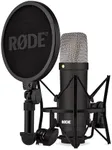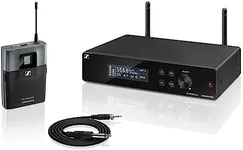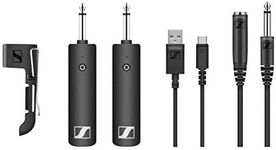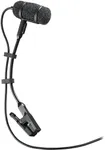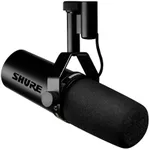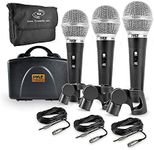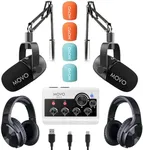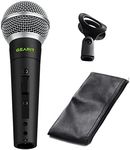Buying Guide for the Best Microphones For Guitar Amps
Choosing the right microphone for your guitar amp is crucial to capturing the best sound quality for your recordings or live performances. The right microphone can make a significant difference in how your guitar sounds, ensuring that the nuances and tones are accurately represented. When selecting a microphone, consider the type of music you play, the environment in which you'll be using it, and your personal preferences for sound. Here are some key specifications to consider when choosing a microphone for your guitar amp.Microphone TypeMicrophones come in different types, such as dynamic, condenser, and ribbon. Dynamic microphones are durable and can handle high sound pressure levels, making them ideal for live performances and loud amps. Condenser microphones are more sensitive and provide a wider frequency response, which is great for studio recordings where capturing detail is important. Ribbon microphones offer a warm, vintage sound but are more fragile. Choose a dynamic microphone for live settings and a condenser or ribbon microphone for studio recordings, depending on the sound you want to achieve.
Frequency ResponseFrequency response refers to the range of frequencies a microphone can pick up. A flat frequency response means the microphone captures all frequencies equally, while a tailored response might emphasize certain frequencies. For guitar amps, a microphone with a frequency response that highlights mid-range frequencies (around 80Hz to 15kHz) is often preferred, as it captures the core tones of the guitar. If you play a style that relies on specific tonal characteristics, choose a microphone with a frequency response that complements those frequencies.
Polar PatternThe polar pattern of a microphone determines how it picks up sound from different directions. Common polar patterns include cardioid, supercardioid, and omnidirectional. Cardioid microphones pick up sound primarily from the front, reducing background noise and feedback, making them ideal for live performances. Supercardioid microphones have a tighter pickup pattern, offering even more isolation. Omnidirectional microphones capture sound from all directions, which can be useful in studio settings to capture room ambiance. Choose a cardioid or supercardioid pattern for live use and consider an omnidirectional pattern for studio recordings if you want to capture the room's acoustics.
SensitivitySensitivity measures how well a microphone converts sound into an electrical signal. Higher sensitivity microphones pick up quieter sounds more easily, which can be beneficial in a controlled studio environment. Lower sensitivity microphones are better suited for loud sound sources, like a cranked guitar amp, as they are less likely to distort. If you play at high volumes, a lower sensitivity microphone will handle the sound pressure better. For quieter, more detailed recordings, a higher sensitivity microphone might be more appropriate.
DurabilityDurability is an important factor, especially if you plan to use the microphone for live performances or on the road. Dynamic microphones are generally more robust and can withstand rough handling and high sound pressure levels. Condenser and ribbon microphones are more delicate and require careful handling. If you need a microphone that can take a beating, go for a dynamic microphone. For studio use where the microphone will be stationary and handled with care, a condenser or ribbon microphone can be a good choice.
